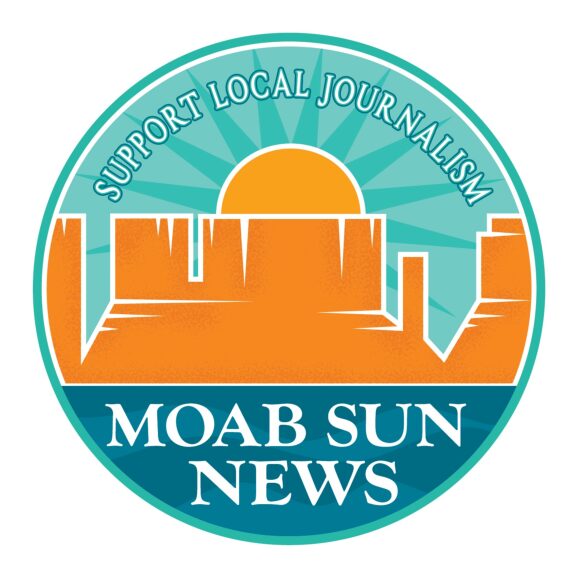For a small desert town, Moab’s food scene certainly punches above its weight, and that’s in no small part thanks to the often-unacknowledged farmers who grow local foods and high-quality ingredients.

Moab Grown is an initiative that connects farmers and producers with the local community, chefs, and retail outlets. Their annual Moab Local Food Guide is a key part of forming those relationships, and the 2024 edition is back and better than ever.
Moab Grown’s Shiree Duncan worked with Roslyn McCann of Utah State University to produce the 2024 Moab Local Food Guide, funded through Moab Grown merchandise sales, USU Extension Sustainability, participating restaurants, and a Synergy Company grant.
Each winter, Duncan contacts local farmers to add material to the guide, get tips about new farms, and update the resource with the latest information about locally grown food. McCann and the team at USU help with creation, graphic design, and printing.

“It really is such a beneficial partnership in terms of creativity and ideas on how to move forward—we work really well as a team,” Duncan says.
The guide focuses on food grown and produced within a 100-mile radius of Moab, featuring fruit and vegetable growers, ranches, nurseries and gardens, and more. A print version is distributed to local chefs and community members in early spring, while an online version is accessible anytime.
Easy Bee Farm is a local farm that operates a farm stand and CSA subscriptions for Moab residents, and owner Rhonda Gotway-Clyde is glad that this guide connects growers like her to the community.
“I think it’s really important because we are so limited here,” Gotway-Clyde says. “We’re so isolated in Moab, we’re not in an agricultural zone, so we don’t have those opportunities to eat the most nutrient-dense and fresh foods. Everything is trucked in for thousands of miles… [the guide] really helps people who really want to eat the best identify where and who the local players are.”
Gotway-Clyde says the guide has helped connect farms like hers to the community and to local restaurants, incentivizing farms to sell locally and helping residents know their food sources. She commends Duncan and the team at USU for doing such great work each year.
The ultimate goal is to provide a bridge between local growers – many of whom may not have the resources for marketing and social media – and the chefs and buyers of Moab. When those bridges are built, everyone wins. According to Duncan, the numerous benefits include better resilience, health, sustainability, and above all, community.
“Food grown close to home doesn’t have to travel as far, so it has more nutrients. It also decreases carbon in terms of transportation. It keeps the local dollars circulating here,” she says. “I think it just creates a sense of community to know where your food comes from and to have a relationship directly with your growers. Direct community relationships make a stronger community.”
It’s not just intangible benefits either—those community relationships produce flat-out delicious dishes. Several of Moab’s best-loved restaurants are featured in the guide, committing to sourcing locally-grown produce and value-added products. Patrons can look out for the Moab Grown window decal that adorns restaurants such as 98 Center, Desert Bistro, Red Rock Bakery, Moonflower’s Datura Deli, and more.
“It really goes to show just how powerful local ingredients are. The restaurants that do source local are the best restaurants in town—that’s just how it works,” says Duncan.
Maggie Keating, Community Outreach and Marketing Coordinator at Moonflower Community Cooperative, agrees.
“Moonflower’s Datura Deli sources local as much as possible primarily because it’s fresher and tastes better,” she says. “Food that’s been frozen, canned, or preserved some other way just never tastes as good.”
Keating sees the impact of the guide in helping the local community identify where they can get food that tastes better, has a lower carbon footprint, and is healthier.
“A lot of people in our community, and even tourists, want to support local farms and small businesses. The guide helps direct people to Moonflower, where we act as a hub for these vendors to sell their goods,” she says.
Duncan hopes that everyday consumers who read the guide will support the featured restaurants and support area farmers by shopping at farm stands and retail outlets like Moonflower.
“[I hope] that they make the effort to support local growers… there are a lot of opportunities to purchase local food and a lot of people that make products with local food.”
Those interested can access the online version of the guide at https://tinyurl.com/2024MLFG, and follow @moabgrown on Instagram for features and updates.



